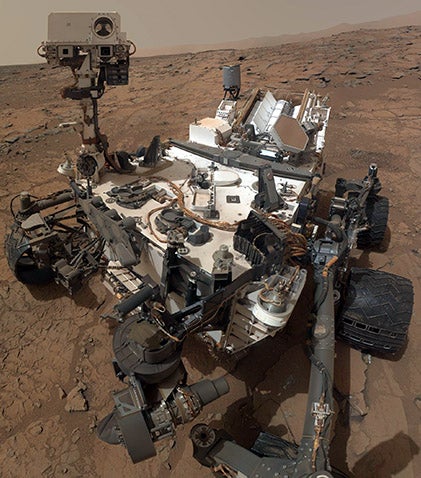Life on ancient Mars?
UO geologist Greg Retallack couldn't quite believe what he was seeing. During two conferences with scientists directly involved with photos and data being relayed from the Martian rover Curiosity, Retallack kept seeing telltale indicators of ancient fossilized soil emerging from deep inside the Gale Crater.
The soil, he recalls saying to the groups, might be paleosols -- that's the scientific term for fossilized soils. Retallack is an expert on them. He's discovered them in some of Earth's oldest soils, dating to 3.4 billion years ago. Such soil, he notes, may well confirm the presence of ancient microbial life.

Looking more closely at Curiosity's images and data published by those earlier this year, Retallack now reports in the journal Geology that the Martian soils, which date to 3.7 billion years ago, have the same features of paleosols he's seen on Earth in the Antarctic Dry Valleys and Chile's Atacama Desert.
"The pictures were the first clue, but then all the data really nailed it," Retallack said. He's now urging soil collection in strategic locations in coming exploration efforts on Mars.
In an email to Retallack, Malcolm Walter of the Australian Centre for Astrobiology said the potential discovery of paleosols in the Martian crater raises the likelihood "that there is or was life on Mars."
Read the UO news release about Retallack's paper in Geology at "Oregon geologist says Curiosity's images show Earth-like soils on Mars."
—By Jim Barlow, Public Affairs Communication

